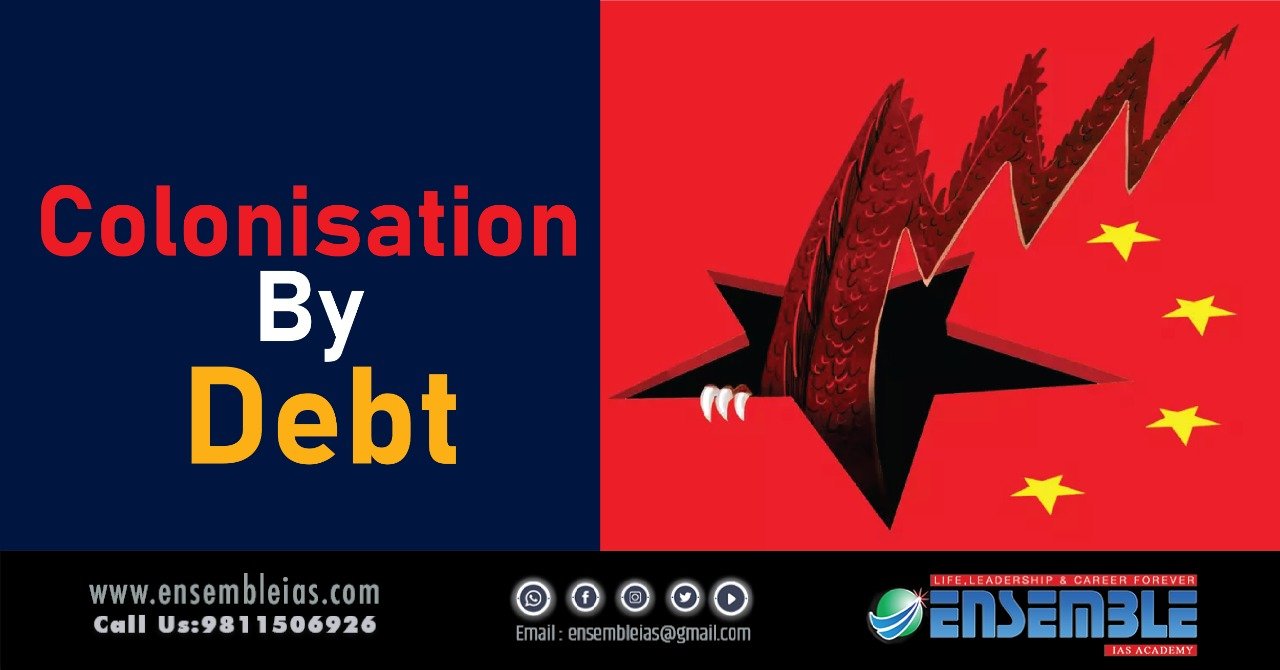Colonisation by debt: Where China begins as an economic partner of a country, and ends up its economic master
American statesman John Adams famously said, “There are two ways to conquer and enslave a country: One is by the sword; the other is by debt.” China, choosing the second path, has embraced colonial-era practices and rapidly emerged as the world’s biggest official creditor.
To buy our online courses: Click Here
With its international loans surpassing more than 5% of the global GDP, China has now eclipsed traditional lenders, including the World Bank, International Monetary Fund, and all the creditor nations of the Organisation for Economic Cooperation and Development (OECD) combined. By extending huge loans with strings attached to financially vulnerable states, it has not only boosted its leverage over them but also ensnared some in sovereignty-eroding debt traps.
The latest to fall prey to China’s debt-trap diplomacy is Laos, which recently signed a 25-year concession agreement allowing a majority Chinese-owned company to control its national power grid. Instead of first evaluating a borrower country’s creditworthiness, China is happy to lend, because the heavier the debt burden on the borrower, the greater China’s own leverage becomes.
A new international study has shed light on China’s muscular and exploitative lending practices by examining 100 of its loan contracts with 24 countries. The lopsided contracts, while curtailing the options of the borrowing nations, give China’s state-owned banks untrammelled discretion, including the power to scrap loans or even demand full repayment ahead of schedule. China leverages its state-sponsored loans to aggressively advance its trade and geopolitical interests, with the study reporting pervasive links between Chinese financial, trade and construction contracts with other countries.
Many Chinese loans, in fact, have not been publicly disclosed, thus spawning a “hidden debt” problem. Every contract since 2014 has incorporated a sweeping confidentiality clause that compels the borrowing country to keep secret the terms or even the loan’s existence. Such China-enforced opacity, as the study points out, breaches the principle that public debt should be public and not hidden from taxpayers so that governments can be held accountable.
Forcing the other side to keep contractual provisions under wraps is also necessitated by the fact that China’s loan accords equip it with “broad latitude to cancel loans or accelerate repayment if it disagrees with a borrower’s policies”, whether domestic or foreign policy, according to the study. The contracts, the study found, also obligate the borrower to exclude the Chinese debt from any multilateral restructuring process, such as the Paris Club. This is aimed at ensuring that the borrowing country remains dependent on Beijing.
The study confirms that little of what China provides is aid or low-interest lending. Instead, its infrastructure financing comes mainly in the form of market-rate loans like those from private capital markets. The more dire the borrower’s financial situation, the higher the interest rate China is likely to charge for lending money. In stark contrast, interest rates for Japan’s infrastructure loans to developing countries mostly run below half a percent. Many of China’s loan contracts also incorporate collateral arrangements.
The study did not examine how borrowing states, when unable to repay Chinese loans, are compelled to cede strategic assets to China. Water-rich Laos’s transfer of its national electric grid to Chinese majority control holds implications for its water resources too as hydropower makes up more than four-fifths of national electricity generation.
One of China’s earliest successes was in securing 1,158 square kilometres of strategic territory from Tajikistan in 2011 in exchange for debt forgiveness. Since then, as the Chinese military base in Badakhshan underscores, China has further consolidated its foothold in Tajikistan, thanks to a corrupt power elite there.
A more famous example is the Sri Lankan transfer of the Hambantota Port, along with more than 6,000 hectares of land around it, to Beijing on a 99-year lease. The concept of a 99-year lease, ironically, emerged from the flurry of European colonial expansion in China in the 19th century. The transfer of the Indian Ocean region’s most strategically located port in late 2017 was seen in Sri Lanka as the equivalent of a heavily indebted farmer giving away his daughter to the cruel money lender.
China’s debt-trap diplomacy has not spared even its close ally Pakistan. Saddled with huge Chinese debt, Pakistan has given China exclusive rights, coupled with a tax holiday, to run Gwadar Port for the next four decades, with Beijing also pocketing 91% of the port’s revenues. China also plans to build near Gwadar a Djibouti-style outpost for its navy.
In small island nations, China has converted big loans into acquisition of entire islets through exclusive development rights. China took over a couple of islets in the Indian Ocean archipelago of the Maldives and one island in the South Pacific nation of the Solomon Islands. The European Union, meanwhile, has refused to bail out the tiny Balkan republic of Montenegro for mortgaging itself to China.
Also Read: How women are shaping political fortunes in India
China’s Belt and Road Initiative (BRI) has been plagued by allegations of corruption and malpractice, and many of its completed projects have proved not financially viable. But, as an unclassified US intelligence report released on April 13 said, Beijing will continue to promote BRI, while fine-tuning it. After all, BRI is central to its debt-trap diplomacy. China often begins as an economic partner of a small, financially weak country, only to gradually become its economic master.




